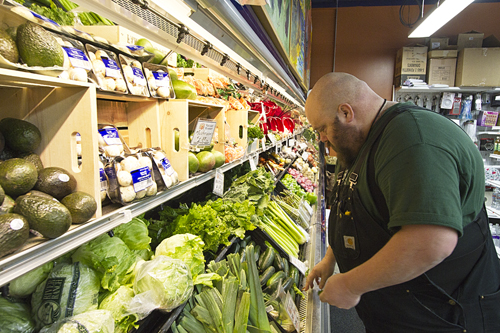Thanksgiving is still weeks away, yet Christmas decorations and gift packages already fill the stores. This holiday season, there’s a splash of pink amongst the traditional red and green gift packs. Pink ribbons have been printed on yogurt, DVDs, batteries, cars and everything in between to represent that some proceeds will benefit breast cancer research.
Shop for the cure
Thanksgiving is still weeks away, yet Christmas decorations and gift packages already fill the stores. This holiday season, there’s a splash of pink amongst the traditional red and green gift packs. Pink ribbons have been printed on yogurt, DVDs, batteries, cars and everything in between to represent that some proceeds will benefit breast cancer research.
Funding breast cancer research is a positive step to finding a cure. According to www.breastcancer.org, every three minutes someone in the United States is diagnosed with breast cancer. Although breast cancer affects less than 1 percent of men, according to the American Cancer Society, it’s the most common cancer for women in the United States. One out of eight women will get breast cancer sometime in her life.
However, corporations are taking advantage of people’s empathy to the disease by using the pink ribbon as a free marketing campaign, which lines their pockets with an increase of profit from consumers that are less likely to suffer from buyer’s remorse.
When most people buy pink ribbon products they are less likely to donate money or will donate less because they feel as though they’ve already done their share. They feel proud of themselves that they’ve helped support the cause, but few of them know the actual amount of proceeds that go toward breast cancer research.
When I contacted corporations to inquire about the amount of money that’s actually donated, the representatives didn’t even know which products supported breast cancer research, let alone how much was donated. It surprised me that I was the first call these representatives had received regarding the donations. Not only do companies not care enough to inform their employees, consumers don’t care enough to check to see where their good intentions are actually going.
After some digging, the representatives were able to supply an answer. One of the corporations I contacted was General Mills, Yoplait’s parent company.
Yoplait, sold for about a dollar a cup, will donate 10 cents towards the cure per pink lid mailed back. Yoplait expects consumers to buy the yogurt with good intentions, but forget to mail in the lids. Consumers mailing lids must mail at least four lids just to cover the price of the stamp. Plus, there’s no guarantee that your mailed lids will actually go towards a donation because Yoplait caps their donation at $1.5 million. If Yoplait really wanted to support the cause, they would not make people jump through hoops and just send in a donation.
The cap on donations can be used even more deceptively. According to www.thinkbeforeyoupink.org, Cartier sold a pink ribbon watch for $3,900 but capped the total donation at $30,000. So after eight watches were sold, the proceeds went directly to Cartier’s bank account rather than as a donation.
The 2008 V-6 Ford Mustang Warriors in Pink convertible is a beautiful car constructed in Ford’s recent design that blends their newer and older styles. It is black with a pink racing stripe and a tasteful pink ribbon beneath the logo. For this $20,000 car, a mere $250 is donated toward the breast cancer cause. This seems like a small benefit, especially taking into consideration the car’s cancer-causing emissions.
Cosmetic companies also send mixed messages. Recent studies have shown that parabens, chemical preservatives, and phthalates, chemical compounds that increase plastic’s flexibility, increase the risk of breast cancer by disrupting normal hormone function to those who come into even topographical contact with it. Although Avon and Revlon boast their support to end breast cancer, both have products containing parabens and phthalates.
If corporations really cared about curing cancer, they would just donate to the cause instead of getting the best of both worlds: marketing through exploitation of this devastating disease and a tax write off. Susan G. Komen for the Cure, which many of the donations go toward, has been researching for prevention as well as a cure for 25 years. With such a slow progress, they do donate to people in need now, but there is only so much that can be done. Breast cancer treatment is very expensive for those with insurance and impossible for those without.
While shopping, buy pink when you can. If you were going to buy chips, go ahead and buy Frito-Lay’s Sun Chips with the pink ribbon. That 25-cent donation is better than nothing. However, don’t buy products that you don’t need or want just because they have a pink ribbon on them. Instead, use the money that you would’ve spent supporting the corporation to donate directly toward the cause by sponsoring someone in the Race for the Cure or donate online at cms.komen.org.
Today “Komen On the Go,” a traveling, educational tour to promote breast cancer awareness, will visit PSU. The tour, sponsored in part by the Susan G. Komen Foundation, has traveled to college campus across the country in a big pink trailer, which will be in the South Park Blocks from 9 a.m.-3 p.m. today.



